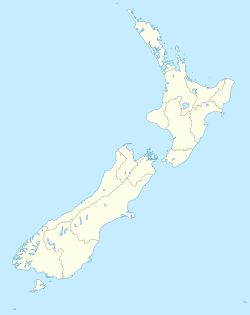Great Island (New Zealand) facts for kids
| Geography | |
|---|---|
| Location | Fiordland |
| Coordinates | 45°59′30″S 166°34′0″E / 45.99167°S 166.56667°E |
| Area | 7.36 km2 (2.84 sq mi) |
| Highest elevation | 185 m (607 ft) |
| Administration | |
| Demographics | |
| Population | 0 |
Great Island is a special island located in the southwest of New Zealand. It is a part of the beautiful Fiordland National Park. This island sits inside a large water area called Taiari / Chalky Inlet. It is just north of Chalky Island. Great Island also has two small lakes, named Lake Dobson and Lake Esau.
Contents
Protecting Great Island's Wildlife
Great Island is very important for protecting New Zealand's native animals. This is because the island is currently free of certain harmful animals called 'pests'.
Keeping Pests Away
One of the biggest threats to New Zealand's native birds and plants are introduced pests. These are animals like possums and stoats. They were brought to New Zealand by people and can harm the local wildlife.
Stopping Stoats
Great Island is currently free of possums. Scientists are working hard to keep it that way. They are also trying out new ways to stop stoats from getting onto the island. Stoats are small, fast hunters that can eat native birds and their eggs.
The island is being used for a special test. This test uses 'self-resetting stoat traps'. These traps catch stoats and then get ready to catch another one, all by themselves. This helps protect the native animals.
Why Great Island is Important
Great Island is quite close to the mainland of New Zealand. This means it's easy for stoats to swim across and get to the island. Even so, Great Island is a very important 'buffer island'.
A buffer island helps protect other islands that are completely free of pests. It acts like a shield. If pests try to move south, Great Island can help stop them before they reach other safe islands.
Future Plans for Protection
There are plans to do even more to protect Great Island. Future projects will focus on controlling rats. Rats are another type of pest that can harm native birds and their eggs. By keeping Great Island free of pests, it helps keep New Zealand's unique wildlife safe for the future.



